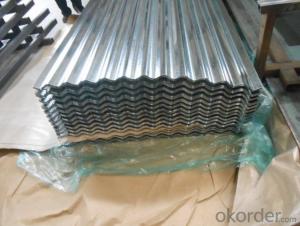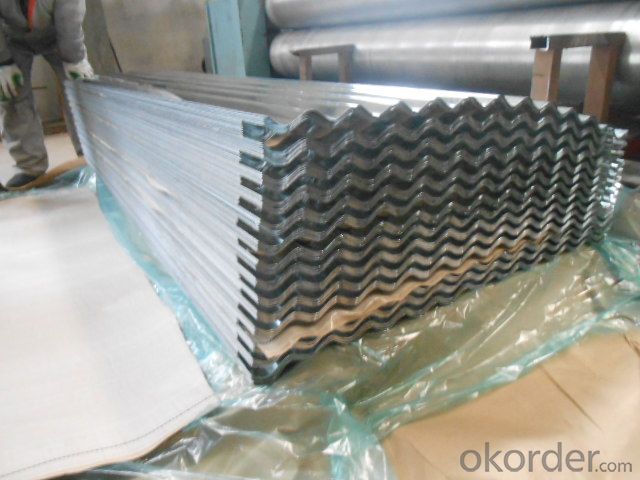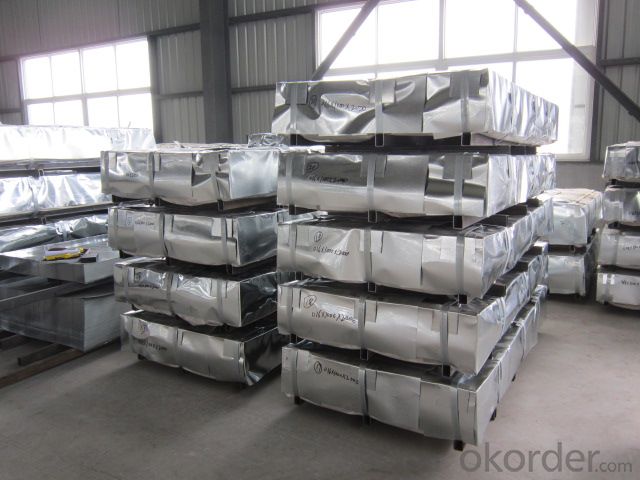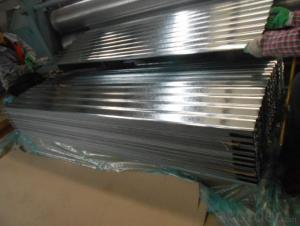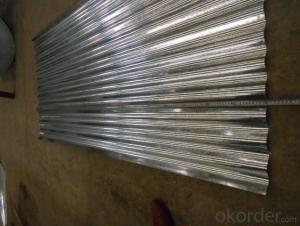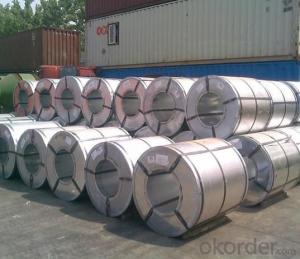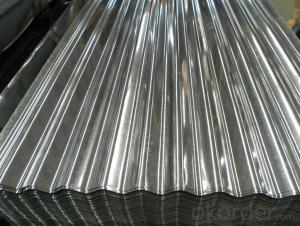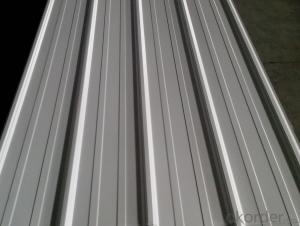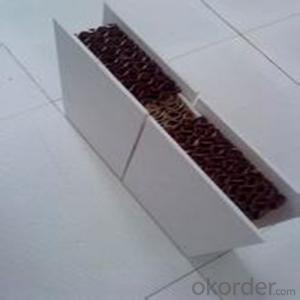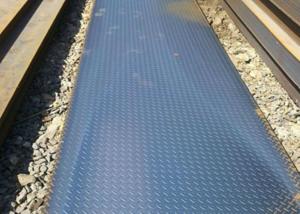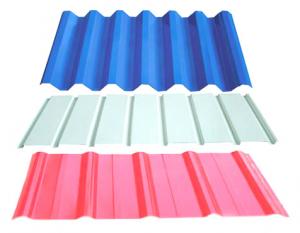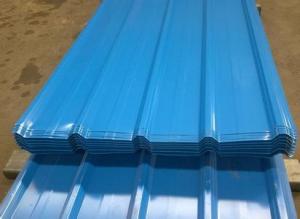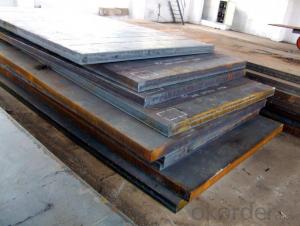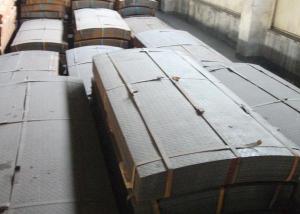Corrugated Hot-Dipped Galvanized-Steel-Sheet
- Loading Port:
- Tianjin
- Payment Terms:
- TT OR LC
- Min Order Qty:
- 25 m.t.
- Supply Capability:
- 5000 m.t./month
OKorder Service Pledge
OKorder Financial Service
You Might Also Like
Description:
Pressing steel panel with the clear line, and many colors for choice, suitable for any different building style materials, achieving satisfy effects;
Pressing steel panel can be freely incised, it can satisfy the especially designing demands. It apply on convenient construction, and anti-seismic performance, fire proof, waterproof, free of maintenance, ect.
Base sheet : galvanized steel sheet, pre painted galvanized steel sheet

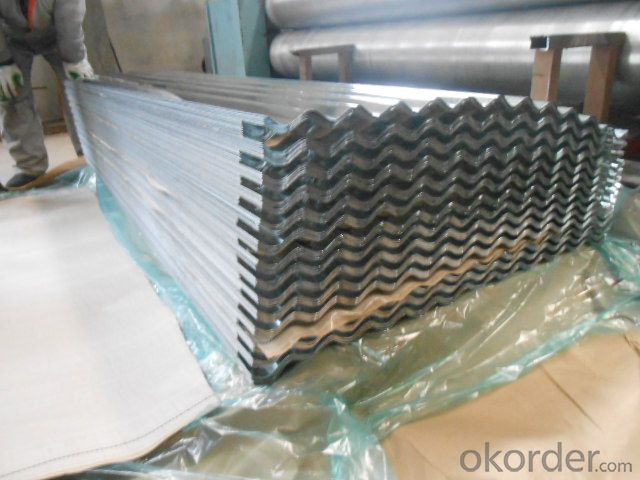
Application:
With excellent cold bending molded manufacturablity, good decoration effect, strong anti-corrosion ability, are also pollution-free and easily recycled. Accordingly, they can be used as final products and basic plates of color coated steel coils and widely applied in construction, home appliances, decoration, ect.
Pressing steel panel with the clear line, and many colors for choice, suitable for any different building style materials, achieving satisfy effects;
Product Specification:
Thickness tolerance: (+/-0.01mm)
Zinc coating: 50-180g/m2
Standard:jis g 3302, sgch
Package: 2- 3 ton/pallet
Specs: 0.14-0.8mm x 900mm x 2000mm
Width:700-1250mm( 750mm,900mm,1215mm,1250mm,1000mm the most common)
Surface:regular/mini/zero spangle, chromated, skin pass, dry etc.
Package:Standard seaworthy export packing: 3 layers of packing, inside is kraft paper,water plastic film is in the middle and outside GI steel ,sheet to be covered by steel strips with lock.
FAQ:
1.How many pieces for one package?
The pieces for one tone is decided by the thickness of the sheet, but we can make it according to your requirements in the reasonable range.
2. Do you have pallets for the package?
Yes, we must use pallets for the package in order to load.
3. Could you produce the sheets according to our design?
Yes, we can.
- Q: What are the different surface finishes available for steel sheets?
- Some of the different surface finishes available for steel sheets include hot rolled, cold rolled, galvanized, and coated finishes.
- Q: What is the difference between a smooth and perforated stainless steel sheet?
- A smooth stainless steel sheet refers to a sheet that has a uniform, flat surface without any visible texture or patterns. It is typically used for applications where a sleek and polished appearance is desired, such as in architectural designs or decorative elements. On the other hand, a perforated stainless steel sheet has small or large holes punched or drilled into it, creating a pattern of openings on the surface. These holes can be round, square, or any other shape, depending on the desired aesthetic or functional requirements. Perforated sheets are commonly used in applications where ventilation, filtration, or visibility is needed, such as in industrial equipment, acoustic panels, or safety grating. The main difference between a smooth and perforated stainless steel sheet is the presence or absence of holes in the surface. While a smooth sheet offers a clean and continuous appearance, a perforated sheet provides several benefits, including improved airflow, enhanced visibility, and increased sound absorption. Additionally, the choice between a smooth or perforated sheet depends on the specific application and the desired functionality. Smooth sheets are ideal for applications that require a sleek and seamless look, while perforated sheets are suitable for applications that demand functionality, such as filtering, screening, or allowing airflow.
- Q: Can steel sheets be used for transportation applications?
- Transportation applications can indeed make use of steel sheets. Steel has gained immense popularity in the automotive and aerospace sectors owing to its exceptional strength, durability, and resistance to corrosion. Chassis, body panels, doors, and structural parts in various transportation components are often constructed using steel sheets. These sheets offer remarkable structural integrity and can endure substantial loads, making them ideal for vehicles and aircraft. Moreover, steel sheets can be effortlessly shaped, welded, and machined, enabling customization and efficient manufacturing procedures.
- Q: Are steel sheets suitable for solar panel mounting?
- Yes, steel sheets are suitable for solar panel mounting. Steel is a strong and durable material that can provide a sturdy base for solar panels. It is resistant to rust and corrosion, making it ideal for outdoor installations. Steel sheets can be easily fabricated into various shapes and sizes to accommodate different solar panel configurations. Additionally, steel is readily available and cost-effective, making it a popular choice for solar panel mounting systems. Overall, steel sheets offer the necessary strength, stability, and longevity required for supporting solar panels effectively.
- Q: What is the difference between a hot rolled and cold rolled galvanized steel sheet?
- The main difference between a hot rolled and cold rolled galvanized steel sheet lies in the manufacturing process and the resulting properties of the finished product. Hot rolled galvanized steel sheets are made by heating a large steel slab or billet above its recrystallization temperature, which is typically around 1700°F (926°C). This high temperature allows the steel to be easily shaped and formed into the desired thickness and dimensions. The hot rolling process also helps to refine the grain structure of the steel, resulting in improved mechanical properties and a more uniform distribution of alloying elements. On the other hand, cold rolled galvanized steel sheets are manufactured at room temperature by passing the hot rolled sheet through a series of rollers that compress and shape the material. This process not only reduces the thickness of the sheet but also increases its tensile strength and improves its surface finish. Cold rolling also allows for tighter tolerances and more precise dimensions, making it suitable for applications that require high precision and consistency. In terms of properties, hot rolled galvanized steel sheets tend to have a rougher surface finish due to the high temperature processing. However, they are generally more ductile and easier to form or bend compared to cold rolled sheets. Hot rolled sheets also have a slightly thicker oxide layer on the surface, which provides some additional corrosion resistance. Cold rolled galvanized steel sheets, on the other hand, have a smoother and more polished surface finish. They are typically thinner and have a higher strength-to-weight ratio compared to hot rolled sheets. The cold rolling process also results in a more homogeneous microstructure, which can improve the overall mechanical properties of the steel, such as hardness and toughness. Overall, the choice between hot rolled and cold rolled galvanized steel sheet depends on the specific requirements of the application. Hot rolled sheets are often preferred for applications that require easy formability and a rougher surface finish, while cold rolled sheets are favored for their higher strength, tighter tolerances, and smoother surface finish.
- Q: Can steel sheets be used for clamps or fasteners?
- No, steel sheets themselves cannot be used directly as clamps or fasteners. However, steel sheets can be used to manufacture clamps or fasteners. Steel sheets can be cut, shaped, and manipulated to create various types of clamps and fasteners such as brackets, plates, or strips. These manufactured components can then be used as clamps or fasteners in different applications, providing strength, durability, and secure attachment. So while steel sheets themselves cannot function as clamps or fasteners, they can be transformed into the necessary components to serve these purposes.
- Q: Can steel sheets be used for agricultural applications?
- Yes, steel sheets can be used for agricultural applications. They are commonly used for building structures such as barns, sheds, and storage facilities. Steel is durable, resistant to weather conditions, and provides excellent protection for agricultural equipment and livestock. Additionally, it can be used for fencing, roofing, and as a material for various agricultural machinery.
- Q: What are the different color options available for steel sheets?
- The different color options available for steel sheets include various shades of gray, black, white, as well as a wide range of custom colors that can be achieved through paint or coating applications.
- Q: Are steel sheets suitable for medical equipment manufacturing?
- Yes, steel sheets are commonly used in medical equipment manufacturing due to their durability, strength, and resistance to corrosion. Additionally, steel sheets can be easily sterilized, making them suitable for use in healthcare settings where cleanliness and hygiene are paramount.
- Q: How do steel sheets perform in extreme weather conditions?
- Steel sheets perform well in extreme weather conditions due to their high strength and durability. They are resistant to corrosion, fire, and can withstand intense winds, heavy rain, and extreme temperatures. Additionally, steel sheets have excellent structural stability, making them suitable for use in various applications, such as roofing, cladding, and construction, even in harsh weather environments.
Send your message to us
Corrugated Hot-Dipped Galvanized-Steel-Sheet
- Loading Port:
- Tianjin
- Payment Terms:
- TT OR LC
- Min Order Qty:
- 25 m.t.
- Supply Capability:
- 5000 m.t./month
OKorder Service Pledge
OKorder Financial Service
Similar products
Hot products
Hot Searches
Related keywords
